The Art of Irish Storytelling Through Song: An Exploration of Cultural Narratives

Updated On: April 22, 2024 by Fatma Mohamed
Irish storytelling through song is a profound expression of a tradition that captures the essence of Ireland’s cultural identity. It’s a practice that has been honed and passed down through generations, deftly weaving narratives with melodies to share history, myths, and the human condition. The songs serve as vessels for stories, often enhanced by the emotive play of traditional instruments, thus preserving the legacy and continuing the oral heritage of the Irish people.

Our cultural tapestry is made richer by these musical narratives that bring to life the traditional themes of love, nature, and the heroic epic. The artful performance of such stories is not just entertainment; it anchors a sense of community and identity, marking events from the every day to the festive. This tradition is alive in sessions and gatherings across Ireland, where storytelling through song remains a vital part of the social fabric.
Table of Contents
Roots of Irish Storytelling
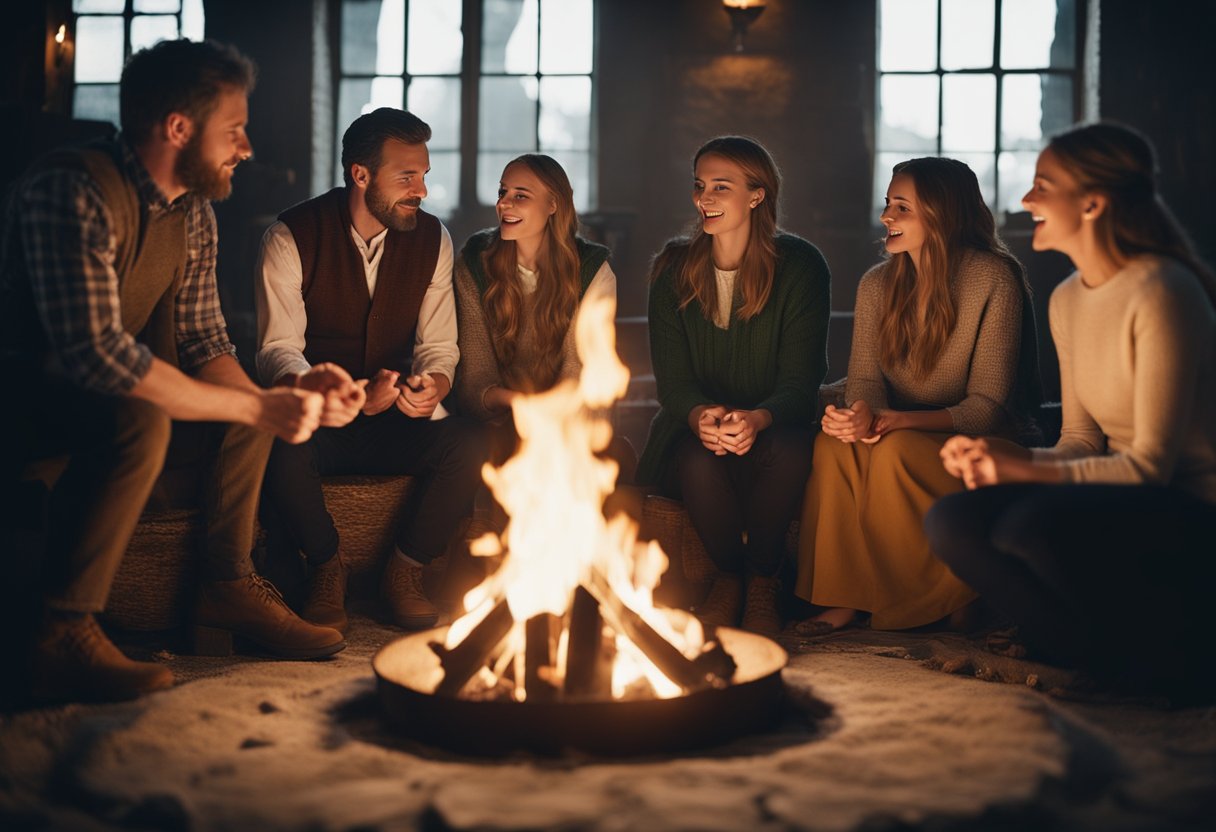
Irish storytelling is an intricate tapestry woven from centuries-old oral tradition and mythological motifs. It’s a realm where the narrative wisdom of our ancestors meets the mystical elements of Celtic lore, encapsulated often through the revered voice of the Seanchaí.
Evolution of Oral Tradition
Our Irish storytelling tradition stems from a rich oral heritage, where history and tales were verbally passed down through generations. This tradition served not only as entertainment but as a vital means to preserve our culture and educate our young. Across Ireland, stories enriched with wit and moral lessons were shared in homes and at gatherings, embedding themselves into the fabric of our society.
Influence of Celtic Mythology
Celtic mythology permeates Irish storytelling, infusing it with characters and lessons that are central to our understanding of the world and our place in it. Legends of warriors, deities, and otherworldly realms have informed our folkloric narratives. Irish folklore is drenched in mythological references, with tales of the Tuatha Dé Danann or the heroics of Cú Chulainn highlighting not just entertainment but the belief systems of ancient Ireland.
The Role of the Seanchaí
The Seanchaí, or traditional storytellers, were keepers of Irish heritage, skilled in recounting tales with both gravitas and charisma. Their role was integral in retaining and imparting wisdom, especially in a time when literacy was not widespread. Through oral recitation, the Seanchaí preserved and breathed life into these tales, ensuring that the flame of our oral tradition never extinguished.
Traditional Themes and Subjects
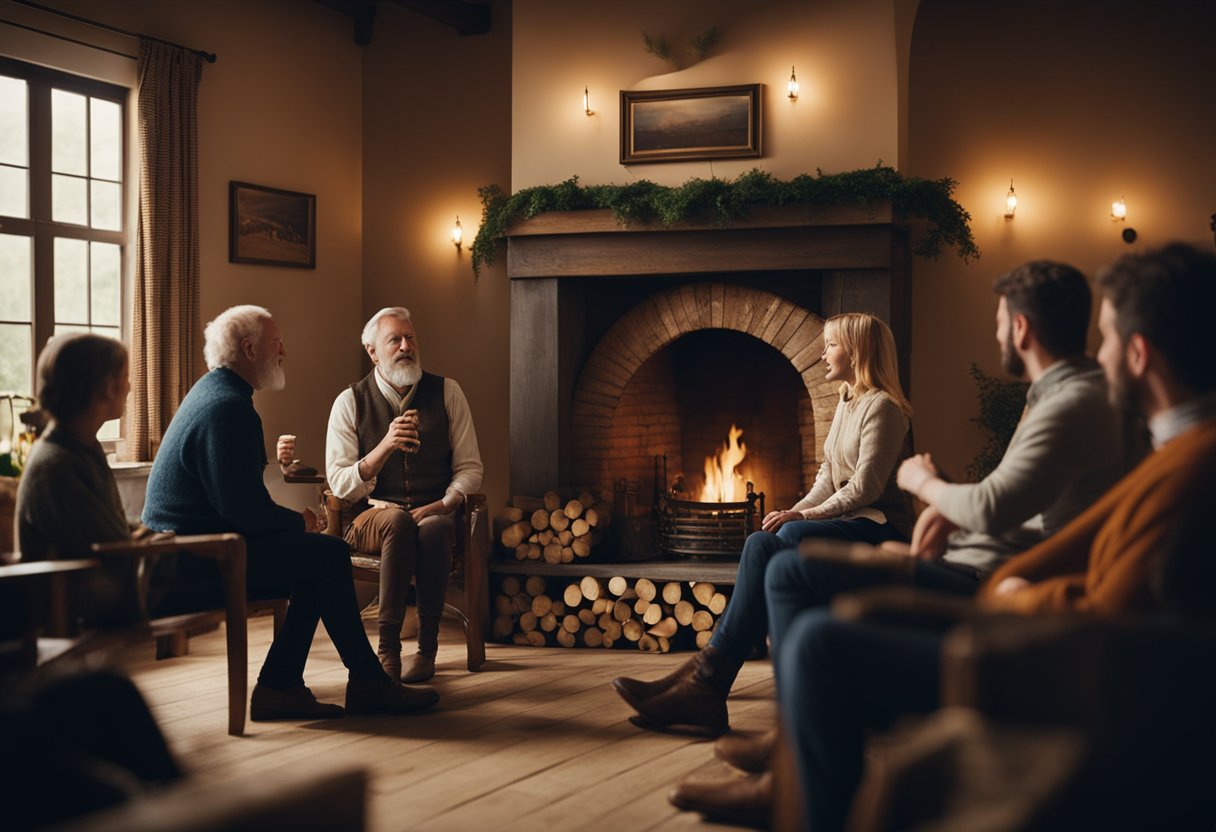
We find that the traditional themes and subjects in Irish storytelling through song are deeply rooted in the island’s cultural fabric. These songs serve as vessels for the collective memory and identity of the Irish people, often centring around a rich tapestry of myths, legends, and the natural world.
Myths and Legends
Myths and Legends in Irish song employ timeless narratives steeped in the mystical. Our music echoes with tales of ancient gods and goddesses, embodying the essence of Ireland’s mythical past. These stories, transferred from generation to generation, illuminate the enduring power of Irish mythology in shaping our cultural identity.
Tales of Heroes and Fairies
Tales of Heroes and Fairies are prominently featured in our songs, which depict extraordinary feats and otherworldly encounters. Songs recounting the exploits of heroes like Cú Chulainn, often intertwined with the mischievous antics of fairies, are cornerstones of Irish folklore and nature, offering lessons in courage and morality.
Irish Folklore and Nature
Finally, Irish Folklore and Nature are inseparable in our music. Songs often celebrate the lush landscapes of Ireland, encapsulating the connection to the land and the reverence for nature prominent in Irish tradition. These folk songs encapsulate the spirit of Ireland, conveying an appreciation for the natural beauty that surrounds us.
Instruments and Musicality
In this section, we uncover the essence of Irish storytelling as it is woven through the timbres of traditional instruments and the craft of composing narratives within melodies.
Traditional Irish Instruments
In the realm of Irish folk music, a few instruments stand out for their significant roles in shaping the soundscapes that support the stories being told. The fiddle, with its rich and emotive tones, is a mainstay in traditional arrangements, often leading the melody which carries the narrative forward. The tin whistle and flute provide bright, piercing harmonies, while the accordion adds depth with its resonant chords. A distinctive Irish beat is typically provided by the bodhrán, a type of traditional Irish drum, which grounds the music with its rhythmic pulse. The banjo is another instrument that contributes to the layered textures of Irish music with its crisp and lively twang.
- Fiddle: Leads with emotive melodies
- Tin whistle & Flute: Offer bright harmonies
- Accordion: Contributes resonant chords
- Banjo: Adds a lively twang
- Bodhrán: Grounds the beat
These instruments collectively create a backdrop that allows the essence of Irish stories to be conveyed through songs, building a bridge between the listener and the tales of old.
The Craft of Melodic Storytelling
Employing melody as a means of storytelling requires great skill. Each note carries the weight of the narrative, and the musicians must interpret the emotion and intention behind the stories they convey. Beyond the individual notes, the structure of a tune – from soft, haunting airs to exuberant jigs and reels – mirrors the tale’s ebb and flow. Melodic storytelling is not merely about the lyrics; it is a dance between the musician and their instrument, evoking the story’s spirit without uttering a single word.
Through traditional songs, the audience is invited into a world where history and legend intertwine, painted vividly by the musicality of the instruments. The accordions and flutes may evoke the image of pastoral landscapes, while bodhráns echo the heartbeat of Irish dance halls. Providing more than just a lyrical account, the melody supports the narrative, inviting us to experience the full spectrum of emotions contained within each story.
Instruments serve not just as tools for entertainment but also as vessels for preserving the cultural fabric that is inherent in traditional Irish songs. The sophistication of melodies intricately tied to powerful storytelling defines the Irish musical tradition’s undying charm.
Community and Cultural Identity

In the tapestry of Irish culture, the song is a vibrant strand that interweaves community and cultural identity, serving as both mirror and memory, reflecting centuries-old traditions and uniting generations.
Songs as a Cultural Keystone
Songs in Irish culture are the bedrock of community cohesion and cultural identity. They encapsulate the essence of what it means to be part of the Gaelic tradition. Through lyrics and melodies, these songs celebrate Irish history, achievements, and the natural landscape, which resonate deeply with the Irish people. For instance, ballads that recount heroic deeds or tragic love stories are integral to preserving the cultural narrative of different communities across Ireland.
Passing Down Through Generations
Traditions and songs in Ireland are intrinsically linked, often passed from generation to generation. This oral transmission is vital for the continuity of Irish culture and Gaelic culture. It’s within family and community gathering that the young learn from elders not only the words and tunes but also the emotions and cultural significance embedded in each song. These musical stories remain a poignant means for younger Irish to connect with their heritage, ensuring that the identity and spirit of their ancestors remain alive and cherished.
Performance and Festivity
In the vibrant tradition of Irish storytelling, performance and festivity play a central role, elevating the art form into a communal celebration of narrative and song. As stewards of this cultural expression, we embrace the public rendering of tales as well as the gatherings that mark this practice.
The Art of Public Storytelling
The pub plays host to many of Ireland’s storytelling sessions, where voices rise and fall in the cadence of ancient narratives and melodies. The performance is a critical element, serving not just as entertainment but as a communal bridge, reinforcing bonds within the society. These storytellers, with their practised elocution and poignant pausing, bring the audience on a journey through time, blending history with folklore. Every gesture, intonation, and pause is purposeful, transforming the experience into an artful tapestry of spoken word and melody.
Festivals and Feasts
Irish festivals are showcases of cultural exuberance, highlighting the substantial role that feasts and gatherings play in our community. Occasions like Samhain or the Gaelic festival of Imbolc become stages for expressiveness, where storytelling through song resonates with the joy and heritage intrinsic to these festivities. Tables laden with traditional fare become gathering points, around which tales are spun and re-spun, creating a sense of togetherness and celebration. Festivals act as incubators for performance, ensuring the vitality of our oral traditions in a modern world.
Geographical Variations
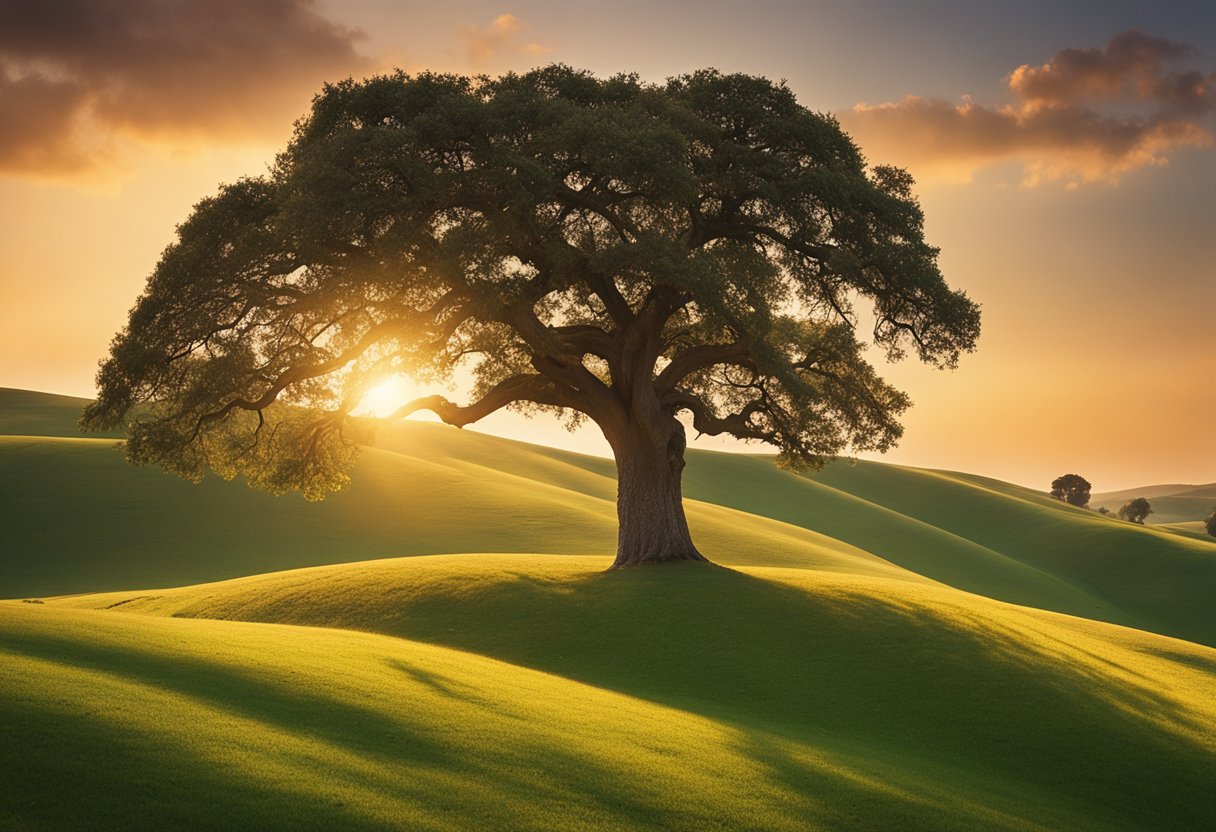
Irish storytelling through song has deep regional roots, each area fostering its own unique narrative and musical expression. From the defiant ballads of Ulster to the lyrical laments of Munster, the geographical diversity significantly shapes the art form.
Local Tales of Ulster and Munster
In the northern province of Ulster, traditional songs often draw from the Ulster Cycle, a body of medieval Irish literature steeped in heroism and the trials of legendary figures such as Cú Chulainn. The rocky landscapes of Ulster, with its deep valleys and cascading rivers, echo in the robust rhythms and poignant stories of hardship and valour that populate local ballads.
Moving to the southern province of Munster, the tales become more personal, often centred around legendary figures like Diarmuid, a famed lover in Irish mythology. Counties like Cork and Kerry, known for their breathtaking landscape, influence the melodies with a soft, rolling cadence reminiscent of their gently undulating hills.
Regional Styles of Song
In Connemara, a district in the west, songs are sung primarily in Irish, reflecting the linguistic heritage of the Gaeltacht. They carry the essence of the rugged Atlantic coastline, weaving narratives of seafaring and emigration with a piercing emotional depth.
County Kerry, coupled with its enduring tradition of storytelling, offers a treasure of songs that encapsulate both the mystical and the everyday, often accompanied by traditional instruments like the fiddle and the bodhrán. In these songs, the wild beauty of the county’s landscape serves as a backdrop to tales of love, loss, and community.
Meanwhile, in Dublin, amidst the hum of the bustling city, we find songs that blend the historical with the contemporary. The narratives here are often intertwined with the social and political, inspired by Dublin’s rich history and evolving urban landscape.
By exploring these regional variations, we gain insight into the cultural complexity of Irish storytelling through song, where geography and narrative are inextricable, each shaping the other in profound ways.
Revival and Adaptation
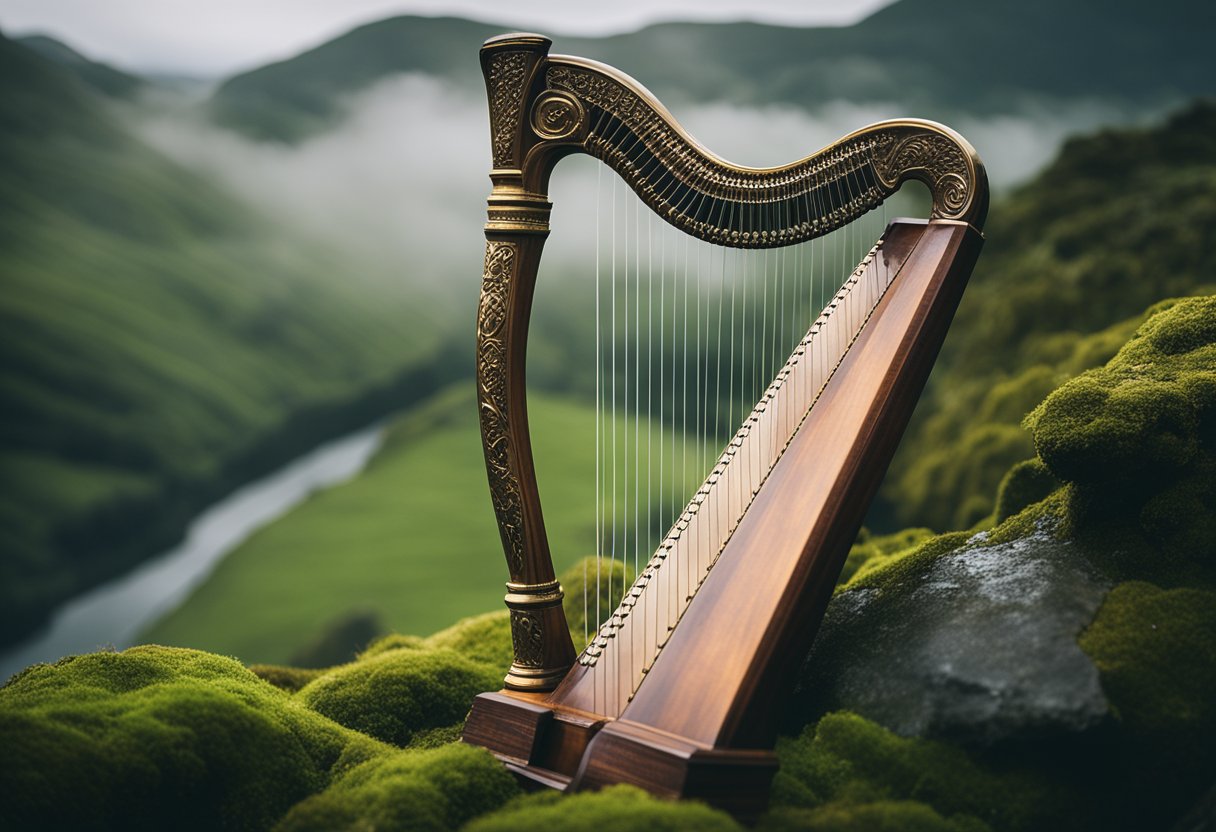
In the realm of Irish storytelling, a significant cultural shift has been noted in the uptake and transformation of traditional narratives into new forms and contexts, particularly through the medium of song. This renewal has allowed a contemporary audience to appreciate and engage with the heritage and stories of Celtic society.
Modern Irish Storytelling Movements
We have witnessed a resurgence in traditional Irish song and storytelling, fuelled by a dedication to the revitalisation of this art form. Movements have embraced the use of technology such as digital media, making these tales accessible to a broader audience. Through this adaptation, there’s a bridge being built between venerable customs and modern experiences, ensuring that the essence of Irish cultural expression remains relevant and vibrant.
Significant to this revival are platforms like ConnollyCove, which began with an emphasis on the authentic nuances of Irish culture and has now empowered a global understanding and appreciation of storytelling across nations. Their expansion aligns seamlessly with the broader initiative of modern storytellers, who persist in adapting and reinvigorating the ancestral narratives of Celtic society.
International Recognition of Irish Narrative
Internationally, the narrative tradition of Ireland has gained recognition, weaving itself into the tapestry of world cultures. Festivals, music venues, and educational institutions across the globe celebrate the distinctiveness of Irish musical storytelling, often spotlighting songs that encapsulate centuries-old tales and bring them to the forefront of international stages.
This adaptation extends beyond mere performance, impacting the very structure of communal and artistic expression. It has led to a burgeoning interest in the Irish narrative as a cultural artefact that has both local and universal appeal. In turn, the international community hails this revival as a nuanced reflection of a poetic past, maintaining the integrity of the original stories while allowing for creativity and reinterpretation.
By these means, we’re not only preserving a precious aspect of traditional Irish song but also advocating its continued evolution amidst the rapidly changing landscape of global storytelling.
Language and Expression
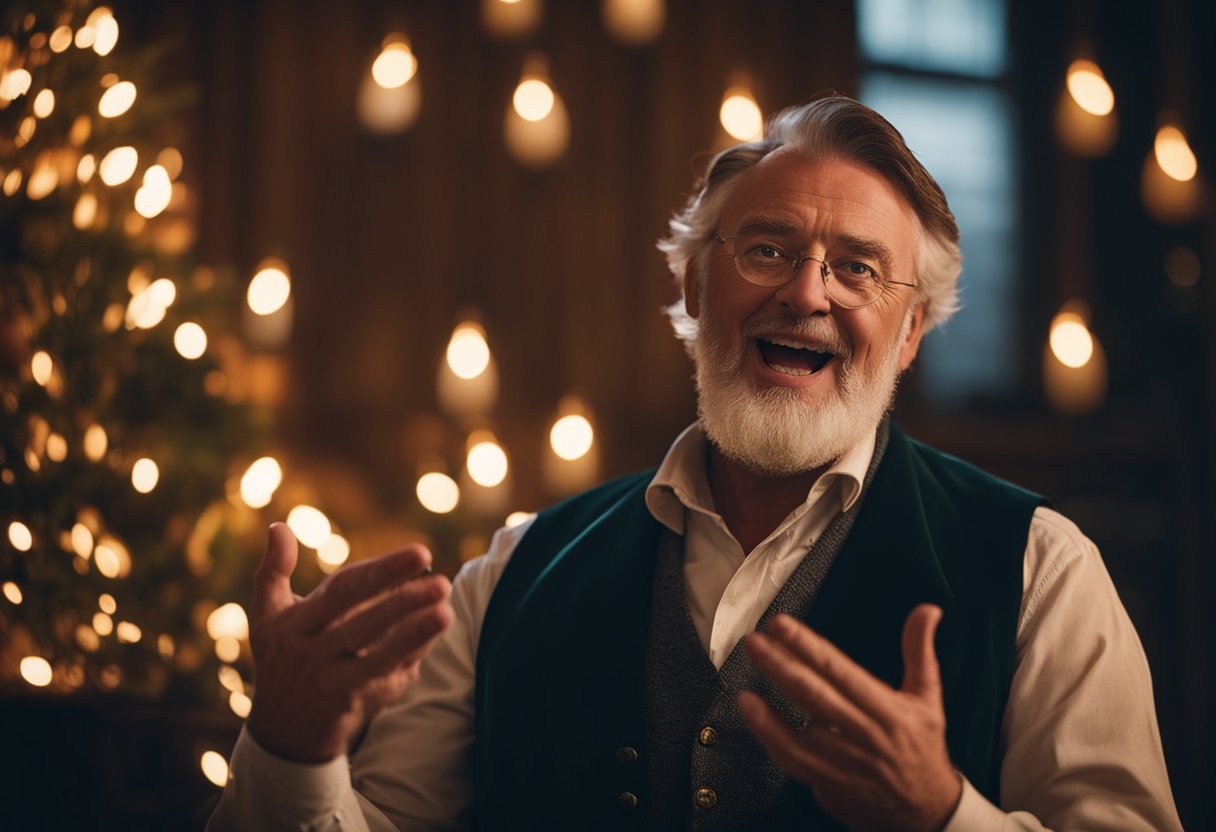
Within the rich tapestry of the Art of Irish Storytelling Through Song, language and expression play pivotal roles. The Gaelic language imbues songs with a unique cadence, while the spoken word and poetry infuse traditional music with wisdom and values.
The Influence of The Gaelic Language
The Irish language, or Gaeilge, with its lyrical and expressive nature, has long been a fundamental element of Gaelic culture. This ancient tongue shapes the form and content of many traditional Irish ballads, embedding them with a distinct rhythm and melodic quality that is recognised across the world. In songs where Irish is interwoven with English, the switching between languages often serves to underline thematic contrasts or to highlight a particular cultural context.
Spoken Word and Poetic Forms
Spoken word and poetry have historically been entwined with Irish music, elevating the art of storytelling to convey deeply held values and community wisdom. Ballads, which are songs that tell a story, frequently adopt familiar poetic forms and use Christianity and other traditional motifs to express common experiences and historical events. In performances, the power of the spoken word is amplified by the song’s melody, creating an engaging narrative experience.
Our understanding of these art forms and their role in preserving and sharing culture can be further explored at Connolly Cove, which offers insights into the broader context of Irish heritage and storytelling.
Children and Education
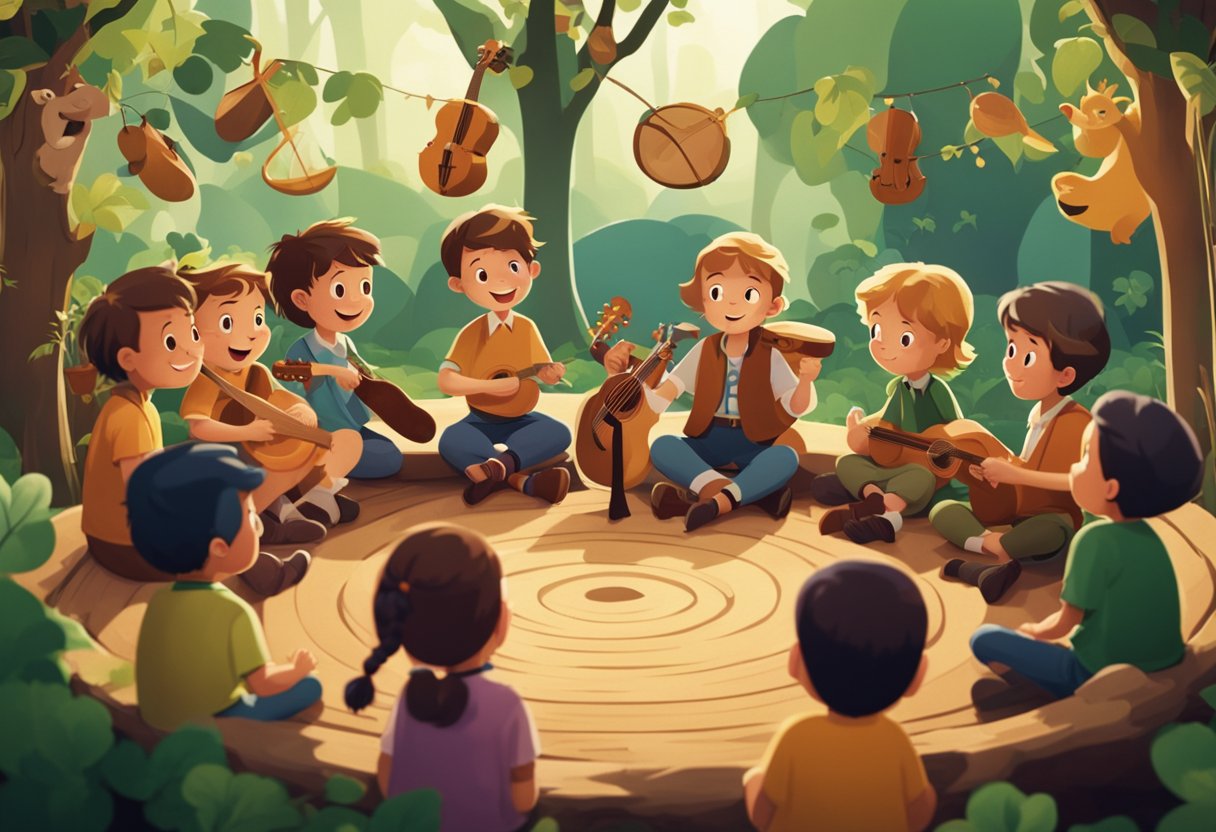
In the rich tapestry of Irish culture, the art of storytelling through song plays a pivotal role in the instruction and development of children. It’s through these melodic narratives that young learners come to grasp the essence of their heritage and the values of their community.
Oral tradition is an educational tool that weaves a thread of continuity, carrying tales from one generation to the next. In schools and family settings, songs are utilised to not just entertain but to impart lessons that mould character and social understanding.
- Tales in Irish storytelling often include myths, legends, and folklore, rich with moral undertones.
- Education is not merely academic; it encompasses the social and ethical growth of individuals from an early age.
- Values such as bravery, wisdom, and kindness are seamlessly interwoven into stories.
Engaging children with storytelling through song paves the way for a lifelong journey of learning that extends well beyond the classroom walls. It is a practice that encourages active participation, reflection, and togetherness, strengthening the bonds within the community.
Through our work, we recognise the power of music and narrative and their role in educating the youth on cultural identity and communal principles, ensuring these valuable stories continue to resonate and inform future generations.
Prospects for the Future
As we navigate the ever-evolving landscape of Irish storytelling through song, we can expect technology and media to play pivotal roles in its preservation and growth. By adopting sustainable practices, we not only honour the tradition but also ensure its transmission to future generations.
Incorporating Technology and Media
The digital age breathes new life into our ancient narratives. Through harnessing platforms like Connolly Cove, which explores cultural wonders, we can reach a global audience. Here, the art of Irish storytelling is not just preserved; it is innovatively shared through articles and videos, making it accessible to anyone curious about the intricacies of Irish folklore and music. Technology offers an array of tools — from immersive virtual reality experiences to interactive online archives — which can enrich our engagement with traditional songs, stories, and the seanchaí heritage.
Sustainable Practices in Storytelling
In our approach to storytelling, sustainability is key. We strive to maintain the integrity of the oral tradition while exploring new, environmentally friendly ways to share our narratives. This involves promoting local artists and minimising cultural commercialisation. By prioritising authenticity and community-based methods, we uphold the essence of the seanchaí. In practice, this means supporting small venues and cultural events that showcase Irish songs and stories, ensuring that the core of our cultural expression remains intact for the future. It’s about passing on a living tradition, rich with information and history, in a manner that does not deplete our cultural resources but instead revitalises them.
In sum, the prospects for the art of Irish storytelling through song are bright. With thoughtful integration of technology and dedication to sustainable practices, there is hope for its continued vibrance and relevance. The tales of old will not just survive; they will thrive and adapt, resonating with new audiences in a world that’s more connected than ever before.
Frequently Asked Questions

In this section, we’ll address some of the most common inquiries regarding the entwining of storytelling and music in Irish tradition.
What are the characteristics of traditional Irish narrative songs?
Traditional Irish narrative songs, often termed ballads, are characterised by a strong lyrical storyline set to engaging melodies that convey a wide range of emotions. These ballads are typically composed in a way that facilitates the oral transmission of stories, history, and myths.
Who are some notable figures in the history of storytelling through music in Ireland?
Notable figures in the history of Irish musical storytelling include the legendary bards like Turlough O’Carolan, who is renowned for his contribution as a blind harpist and composer in the 17th and 18th centuries. Modern storytellers like The Dubliners have recently continued this rich legacy, narrating Ireland’s history through song.
How has the role of a seanchaí evolved in contemporary Irish culture?
The role of the seanchaí, the traditional Irish storyteller, has evolved with the integration of modern mediums of storytelling, yet the essence of their craft remains intact. Contemporary seanchaís blend the ancient art of oral storytelling with new media, thereby ensuring the relevance and continuity of Ireland’s folklore.
In what ways does Irish music contribute to the preservation of folklore and tales?
Irish music plays a crucial role in the preservation of folklore and tales, acting as a vehicle for passing down the rich tapestry of Irish mythology and history. Songs encapsulate narratives, often embedding them within melodies that resonate through generations.
What are the common themes explored in Irish story-driven songs?
Common themes in Irish story-driven songs include emigration, historical events, love, and mythology. Tales of hardship and the joys and sorrows of daily life are frequently expressed, offering a window into the collective consciousness of the Irish people.
How do modern Irish musicians incorporate elements of traditional narrative into their work?
Modern Irish musicians incorporate elements of traditional narrative by fusing contemporary sounds with age-old storytelling techniques. They preserve the narrative essence through lyrical content while often expanding the instrumental arrangement to include a variety of modern influences.






